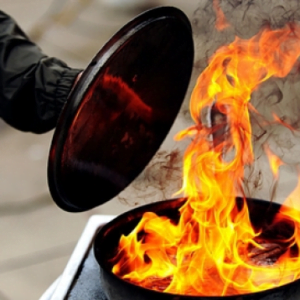What is Flash Point
What is Flash point?
It is the Lowest temperature at which liquid can vaporize to form an ignitable mixture in air.
E.g. Vegetable oil flash point is above 310 ˚C. It is not flammable while cooking sometimes it forms vapor above its surface in sufficient concentration that it can be an ignitable mixture in air.
Why it is important to know the Flash point of flammable liquid?
From Safety prospective it warns us of risk and enables us to take correct precautions while storing and transporting of flammable liquid.
Below flash point temperature the liquid is unable to form enough vapors to form ignitable mixture.
Measuring Flash point is divided into two main categories:
Open Cup method for higher flash point which is greater than 160 ˚C. E.g. Lubricants, Edible oil, Base oil etc. Apparatus used here is “Cleveland Open Cup” in short COC
Closed Cup method for Lower flash point which is from Room Temperature to 160 ˚C. E.g. LDO/Furnace oil, Solvents etc. Apparatus used here is “Pensky Martens Closed Cup” in short PMCC
What is Class A, B, C Petroleum – Flash point?
- Petroleum Class A: Petroleum having a flash point below 23 degrees Centigrade-
Petrol, Hexane, Toluene, Naphtha, Acetone, Ethanol, Methanol, M.E.K, Benzene, Pentane,
SBP Solvent etc. - Petroleum Class B: Petroleum having a flash point of 23 degrees Centigrade. and above but below 65 degrees Centigrade – Diesel (HSD), Kerosene (SKO), MTO etc.
- Petroleum Class C: Petroleum having a flash point of 65 degrees Centigrade. and above but below 93 degrees Centigrade – LDO/Furnace oil
